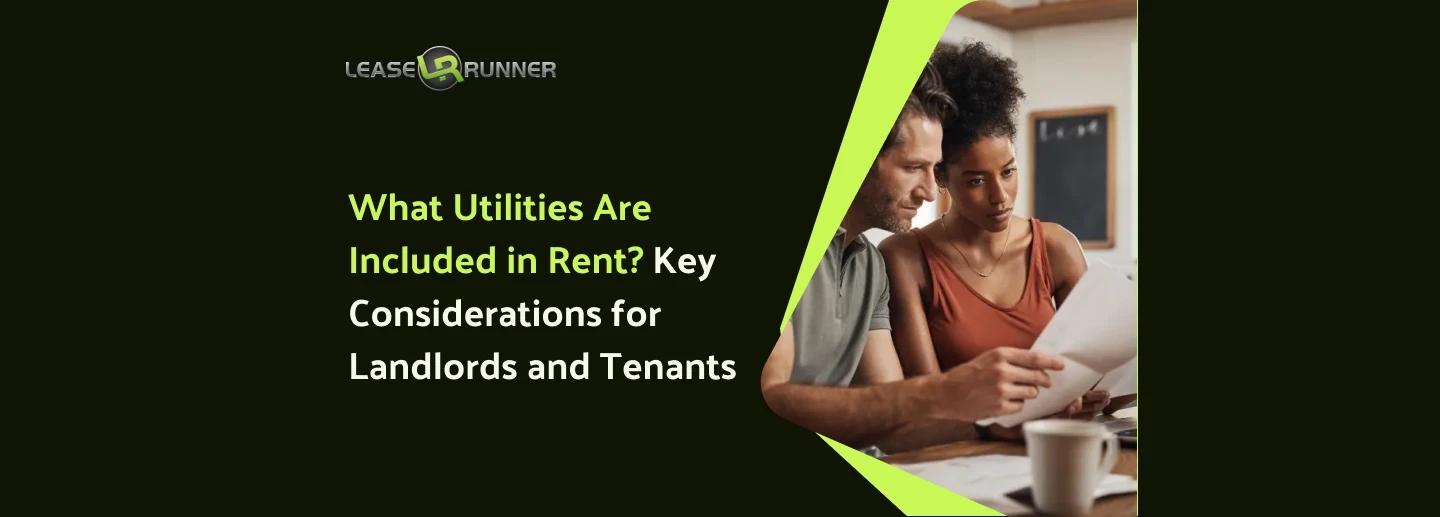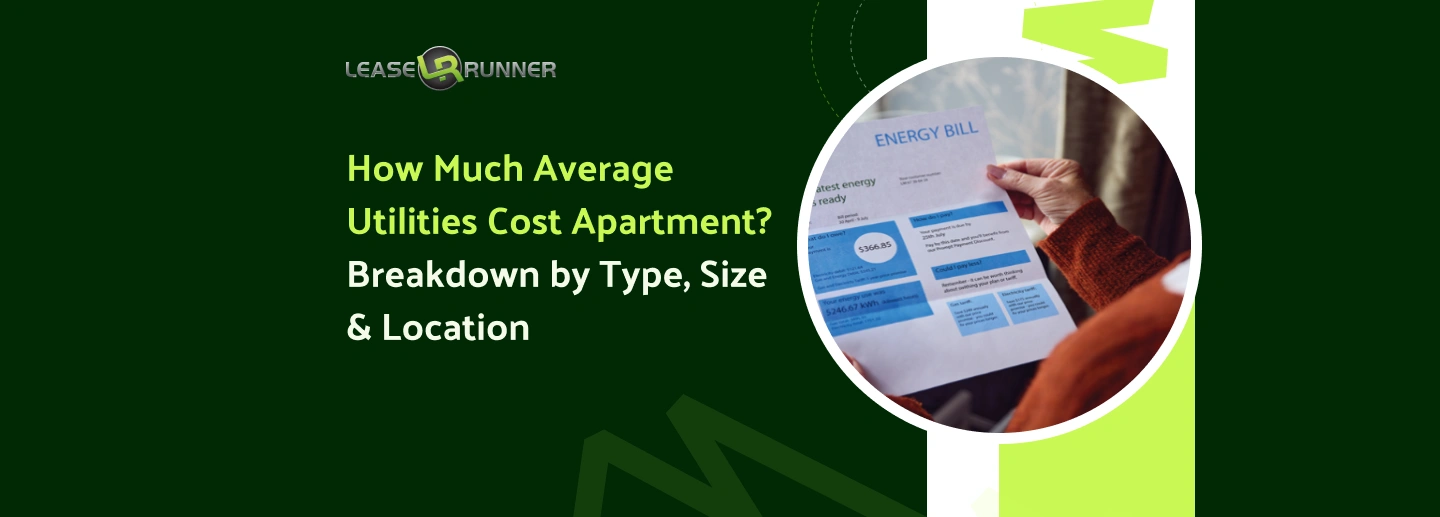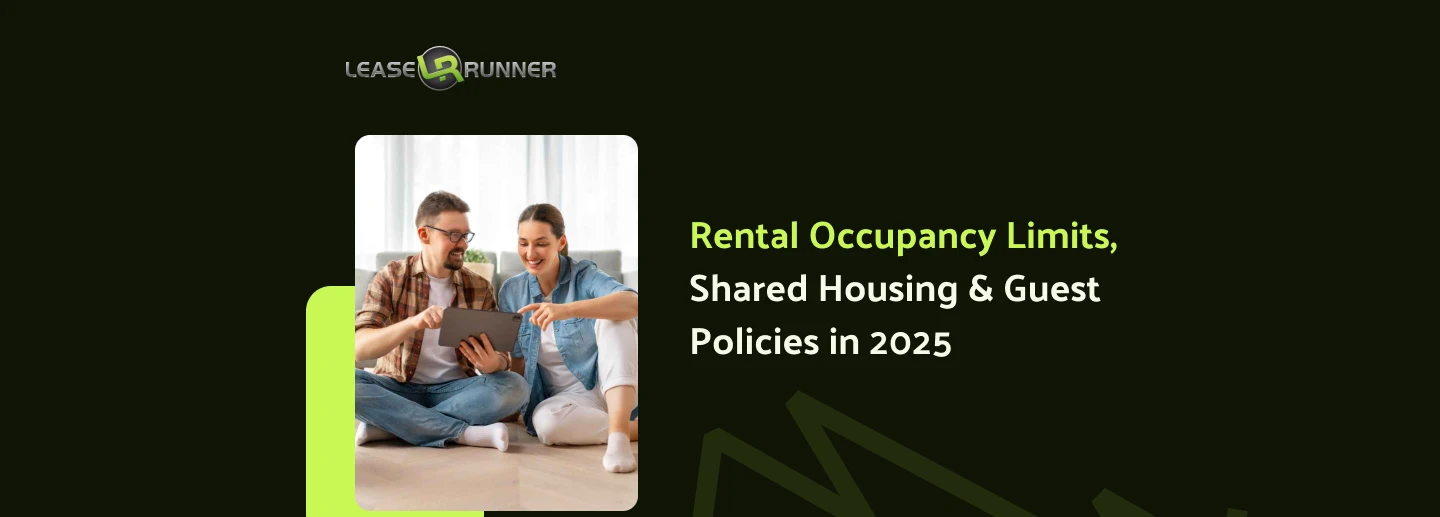When searching for a new place, the question "what utilities are included in rent?" is crucial. Understanding whether apartment rentals include utilities can significantly impact your monthly budget. Renting can be complex, and utility costs often add a substantial, sometimes surprising, expense. For both tenants and landlords, clarity on this matter is essential for a smooth tenancy.
What Utilities Are Usually Included in Rent?
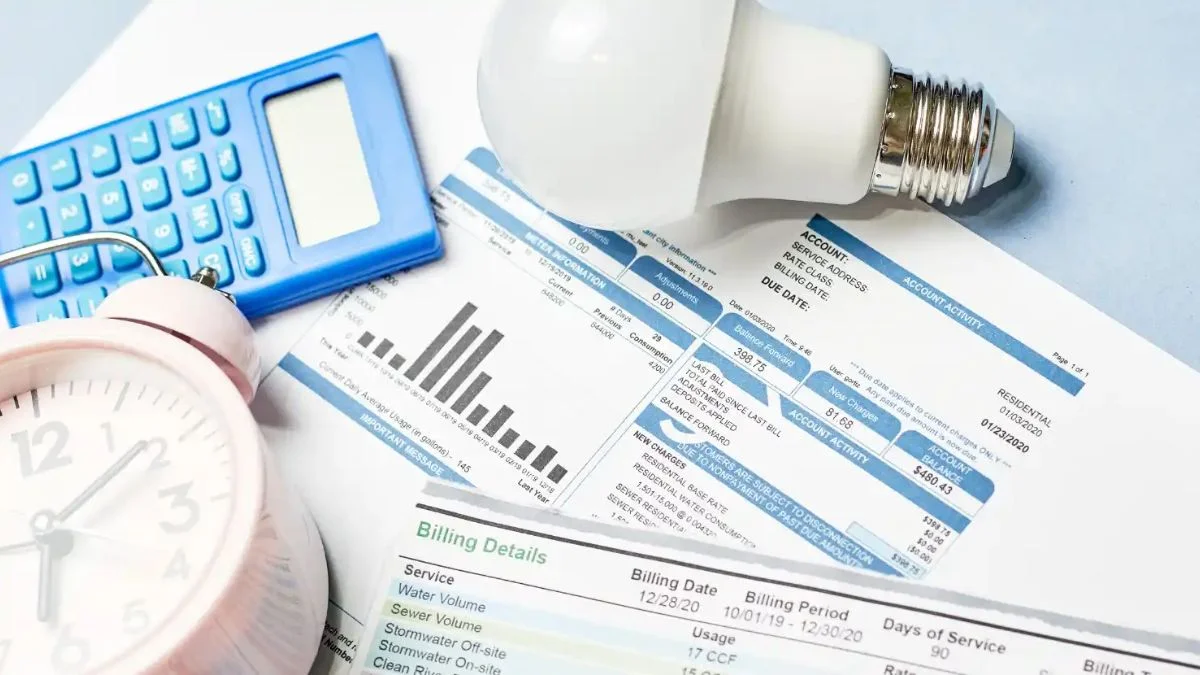
In most apartment rentals, the utilities that are bundled into rent are those that are either shared by the building or easier for landlords to manage as a group expense. These inclusions save tenants the hassle of opening accounts for every service and give landlords more predictable billing.
1. Water and sewer
Water is the most common inclusion. Water is the most common inclusion. In fact, over 70% of U.S. apartments include the water bill in apartments and sewer costs in rent. Since properties usually have a single water meter, landlords distribute the cost across units. Tenants often wonder, “Is water included in rent?”—and in many cases, the answer is yes.
2. Trash and recycling
Trash collection and recycling fees are almost always included. Cities contract with waste services, and billing is directed to property owners. This makes it simpler for landlords to roll the cost into rent.
3. Heating and gas (depending on region)
Heating is often centralized in older buildings in cold-weather states such as Minnesota, Illinois, or Massachusetts. Landlords cover the cost of running a boiler or central heating system. Gas may also be included if there is a shared supply. This can be a significant factor when determining what utilities are included in rent during the colder months.
4. Electricity (rare cases)
Tenants often ask, “Is electricity included in rent?” In most rentals, the answer is no. However, in older buildings with one shared meter, landlords sometimes cover electricity costs. This is less common in newer constructions.
5. Internet and cable (optional or luxury rentals)
Internet and cable are not essential utilities but are sometimes included as part of a rental package. This is most common in student housing, high-end apartments, and corporate rentals, where convenience is a selling point.
For landlords considering renting out a room in their own home, knowing which utilities to include can help optimize costs and attract tenants.
What Utilities Are Not Included in Rent?
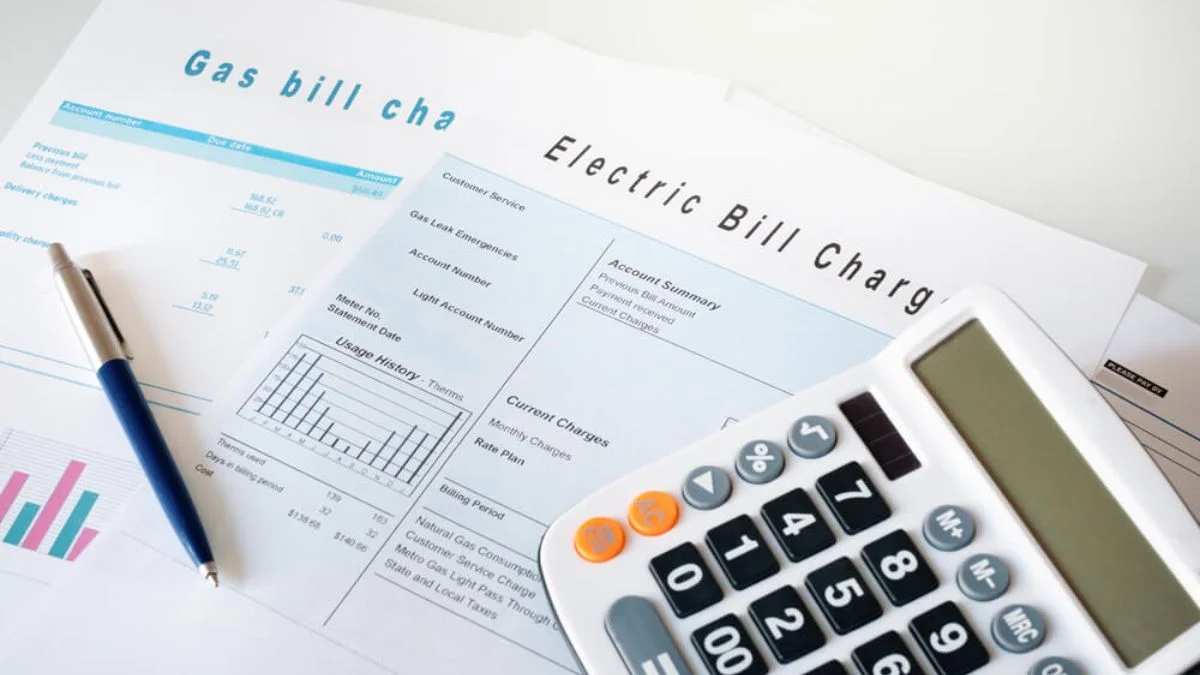
For most renters, knowing what utilities are not included in rent is more important for budgeting. The general rule is that any service that can be individually metered is likely the tenant's responsibility, meaning do renters pay utilities for most major services.
Electricity and Internet
These are the two utilities most frequently excluded. Since electricity consumption is highly variable - depending on thermostat settings, appliance use, and lighting - landlords prefer not to cover this cost. The same applies to the internet; tenants often want to choose their own provider and service speed.
Gas in Newer or Individual-Metered Units
In modern buildings where each unit has its own furnace, water heater, and gas line, the tenant will be responsible for the gas bill. You'll need to check the list of utilities for apartment to confirm.
For example, in Houston, many apartments built after 2000 are individually metered for gas. Tenants must call providers like CenterPoint Energy to open an account before moving in.
Optional Services (TV, Pest Control, Amenities)
Premium or non-essential services are rarely included:
- Cable TV packages or premium streaming add-ons.
- Pest control (sometimes offered quarterly but not guaranteed).
- Amenities fees such as gym access, pool upkeep, or covered parking.
These are considered lifestyle extras, not utilities required for habitability.
What Tenants Do If Utilities Aren’t Included in Lease?

If your lease states “no utilities included in rent” or does not clearly specify who pays, you need to act quickly. If you’re considering subletting, make sure the sublease agreement clearly states who is responsible for each utility. Utilities are essential services, and failing to prepare can leave you without water, electricity, or internet on move-in day.
Here are the steps tenants should take to confirm what utilities are included in rent and set up the rest.
Read the Lease Carefully
The lease agreement is the binding contract between you and the landlord. It should spell out who is responsible for each utility. Sometimes it will say “tenant pays all utilities,” while other times it will list specific ones, such as gas and electric, with the landlord covering water and trash. This step is critical to how to know if utilities are included in rent.
Contact Providers
If utilities are your responsibility, you will need to set up accounts in your own name. This usually applies to:
- Electricity: In most states, tenants pay directly unless it’s a special case (for example, some older apartments in New York include electricity).
- Gas/Heating: Especially relevant in cold-weather states like Minnesota, Illinois, or Massachusetts.
- Water and Sewer: Sometimes billed directly, but often handled through the landlord. Always confirm.
- Internet and Cable: Considered optional, but usually tenants must establish service themselves.
Confirm Transfer Dates
To avoid being left without service, confirm that utility activation dates align with your move-in date.
- Electricity and gas companies may require a few days to process your request.
- Some providers require a deposit or credit check before starting service. (For more on financial requirements, review how much is a security deposit for an apartment.)
Tip: If the previous tenant hasn’t closed their account, you may need to provide your lease agreement as proof of occupancy to start service in your name.
Budget for Monthly Costs
When utilities are not included, tenants should factor these into their housing budget. The list of utilities for apartment rentals typically includes:
- Electricity
- Gas or heating fuel
- Water and sewer
- Trash and recycling
- Internet/cable
On average in the U.S., utility costs for a one-bedroom apartment can range from $150 to $250 per month, depending on location and usage. For example, heating in Chicago winters may double a tenant’s gas bill compared to a mild climate like Florida.
Clarify Shared Utility Costs
In multi-unit rentals, landlords sometimes use Ratio Utility Billing Systems (RUBS) or shared meters. If this is the case, confirm:
- How your share is calculated (square footage, number of occupants, or flat fee).
- Whether the landlord charges an administrative fee in addition to the utility bill.
Example: In California, landlords must fully disclose RUBS in the lease. Tenants should request itemized statements to ensure they are not overcharged.
Pros and Cons of Renting with Utilities Included
When looking for an apartment, many tenants wonder: Is it better to have utilities included? The answer depends on your lifestyle, usage habits, and whether you prefer the convenience of a fixed monthly payment or the flexibility of paying only for what you use. Understanding the pros and cons can help you decide if this option fits your needs, especially after finding out what utilities are included in rent.
Pros for Tenants
- Fixed Monthly Budget: A rent with all utilities included simplifies budgeting since the total housing cost is the same every month.
- Convenience: There's no need to set up accounts with utility companies or track due dates.
- Savings for Heavy Users: Tenants who use more heat or electricity than average may save money.
Cons for Tenants
- Higher Base Rent: Landlords often pad the rent to cover the average utility cost and a buffer. Light users might end up paying more than they consume.
- Lack of Control: Tenants may be less motivated to conserve energy, but the landlord may impose usage limits. This situation also highlights the distinction between tenant vs occupant, as responsibilities for utilities and maintenance can differ.
- Disputes: If a landlord charges a flat fee, disagreements can arise over the fairness of the amount. Check if the lease clarifies how much a landlord can charge for utilities if they are sub-metered.
How Utility Inclusions Differ by Location and Property Type

When it comes to rental agreements, who pays for utilities can vary greatly depending on the type of property and where it is located. The inclusion of services like water, heat, or trash collection isn’t standardized—landlords make decisions based on infrastructure, local climate, and property design. Below are the most common differences you’ll encounter.
Apartments vs. Single-Family Homes
- Apartments: Utilities such as water, sewer, and trash are more often included since these services are shared across the building. Heating may also be bundled if the building uses a central system.
- Single-Family Homes: Tenants are usually responsible for all utilities, from electricity and gas to trash collection, because the property is fully independent. In cities with rent stabilized vs rent controlled units, rules about which utilities are included may differ, affecting tenant costs and landlord obligations.
Older Buildings vs. New Constructions
- Older Buildings: Shared systems like boilers or centralized heating are common, making it hard to meter usage individually. As a result, landlords may include heating or hot water in the rent. For instance, a pre-war building in Chicago might advertise “heat included” as a selling point.
- New Constructions: Built with efficiency in mind, most have separate meters for electricity, gas, and sometimes even water. Tenants are billed directly based on consumption, which encourages energy-saving habits. In these properties, it’s rare to see utilities bundled.
Cold-Weather States vs. Warm-Weather States
- Cold-Weather States: In areas with long, harsh winters, landlords are reluctant to include heating because costs can be unpredictable and very high. A tenant in Minnesota, for example, will almost always pay for their own gas or electric heat.
- Warm-Weather States: Here, water is more likely to be included since costs remain stable. Electricity, however, is rarely covered because air conditioning drives bills up in the summer. For example, in Florida, you might get water included, but you’ll be responsible for your own power bill.
For individuals learning how to become a landlord, understanding which utilities to bundle is crucial for efficient property management.
Legal Considerations for Landlords in the U.S.
Landlords must adhere to specific laws regarding utilities, which are designed to protect tenants. This information is vital for landlords setting policies and for tenants understanding their rights, especially concerning what utilities are included in rent as a basic requirement.
Federal Baseline: Habitability and Essential Services
At the federal level, the concept of the implied Warranty of Habitability applies across all U.S. states. This legal principle requires landlords to maintain rental properties in a condition that is safe and livable. Essential services like hot and cold running water, heat during cold seasons, and electricity must be available.
For example: If a landlord fails to provide running water or heat in January in Minnesota, tenants may have the right to withhold rent until the issue is fixed. In some states, tenants can even arrange repairs themselves and deduct the cost from rent.
For practical guidance, tenants can also check timelines on how long a landlord has to fix something, since delayed repairs of utilities often cross into habitability violations.
California: Transparency and New Laws on RUBS
California has some of the strictest utility billing rules. Landlords who use RUBS (Ratio Utility Billing System) or sub-metering must provide:
- Clear disclosure of the billing method in the lease.
- An explanation of how charges are calculated (e.g., based on square footage, number of occupants, or another formula).
- Itemized statements showing the tenant’s share of costs.
California Civil Code §1940.9 requires landlords to ensure that tenants aren’t charged for services benefiting other units or common areas.
Update (2022 law): Senate Bill 7 requires newly constructed multifamily dwellings to install water submeters, ensuring tenants are only billed for the water they actually use.
New York: Heating and Shared Meter Rules
New York law imposes strict obligations on landlords regarding heat and utility metering.
Heat Season: From October 1 to May 31, landlords must provide adequate heat. The law specifies:
- If the outside temperature falls below 55°F between 6 a.m. and 10 p.m., the inside temperature must be at least 68°F.
- Between 10 p.m. and 6 a.m., the inside temperature cannot drop below 62°F, regardless of outside temperature.
Shared meters: Under New York Public Service Law §52, landlords cannot pass utility charges to tenants if a single meter measures both the tenant’s usage and common areas (like hallways or basements). In such cases, the landlord must pay the bill.
For example, If a tenant’s electric meter also powers the building’s hallway lights, the landlord must cover that cost.
Violations can result in penalties from the New York Public Service Commission and potential tenant lawsuits.
Texas: Disclosure of Utility Allocation
Texas Property Code §92.0081 governs utility allocation. If landlords use sub-meters or billing systems like RUBS, they must:
- Clearly disclose the method in the lease.
- Provide tenants with a written explanation of charges.
- Avoid charging more than the actual utility cost plus a reasonable administrative fee.
For example, a landlord cannot arbitrarily increase water charges beyond the actual bill. If a water bill for the property is $500, tenants collectively cannot be charged $800 under the guise of “utility allocation.”
Failure to follow these rules can lead to tenant lawsuits, state penalties, and in some cases, the voiding of lease terms.
Florida: Penalties for Cutting Off Utilities
Florida Statute §83.67 makes it illegal for landlords to shut off utilities as a way of forcing tenants to vacate. This covers water, heat, light, electricity, gas, and even telephone services.
- Penalties: A landlord who cuts off utilities can face fines, liability for tenant damages, and court orders to restore services.
These protections align with Florida’s broader tenant rights, such as those related to parking rights, which ensure tenants are not unfairly deprived of essential services or amenities.
Common Utility Disputes and How to Avoid Them

Utility disagreements are a frequent cause of conflict between landlords and tenants. Clear communication and a strong lease are the best defense against these issues, which often stem from confusion about what utilities are included in rent.
Lack of Clarity in Lease Agreements
- Problem: The lease doesn't specify who pays for what, leading to ambiguity.
- Solution: A well-drafted lease must clearly state every utility and who is responsible for the bill, whether it's the tenant, the landlord, or if they are shared.
Utility Shut-Offs as Eviction Attempts
- Problem: A landlord cuts off services (like electricity or water) to get a tenant to vacate quickly.
- Solution: This is an illegal "self-help" eviction method (see Florida law above). Tenants should immediately contact local housing authorities or legal aid.
Disagreements Over Shared Utility Costs
- Problem: When utilities are split, one tenant may feel another is using too much, particularly in a property with multiple tenants on a lease.
- Solution: Install sub-meters if possible. If not, the allocation method (RUBS) must be outlined in the lease, or the landlord can charge a non-negotiable, all-inclusive rate.
Tenants Failing to Pay Utility Bills
- Problem: The tenant fails to set up or pay a utility bill, leading to a service shut-off.
- Solution: The lease should explicitly state that utility non-payment is a breach of the lease, allowing the landlord to issue a notice to cure or quit. Landlords often require proof of utility account setup upon move-in.
To make this process easier and reduce disputes, landlords and tenants can use LeaseRunner. This tool allows tenants to manage rent and utility payments online, provides automatic reminders, and helps landlords track payment status in real time. By using LeaseRunner, both parties can ensure utilities are paid on time, avoid shut-offs, and maintain a smooth rental experience.
Conclusion
Knowing what utilities are included in rent is essential for accurately calculating the total cost of renting. While basic services like water and trash are often covered, major costs like electricity and gas usually fall on the renter. Always consult your lease to confirm who pays utilities and what the allocation method is. Clear communication and a comprehensive lease are the best tools for avoiding utility disputes and ensuring a smooth rental experience for everyone.
To simplify rent management and stay on top of utility payments, consider using LeaseRunner for online rent collection and tracking. LeaseRunner helps tenants and landlords keep everything organized, making it easier to handle leases, payments, and shared utilities without confusion or delays.
FAQs
1. Does a lease have to state what utilities are included in rent?
Yes. A legally sound lease agreement must explicitly detail which utilities (if any) are included in the monthly rent and which ones are the tenant's responsibility. Any ambiguity should be clarified in writing before signing.
2. Is renters insurance considered a utility cost?
No. Renters insurance is not a utility. It's a type of personal property and liability insurance that protects the tenant's belongings and covers liability claims. While often mandatory, it's a separate financial responsibility, distinct from utility costs which are tied to the property's services. For average cost information, see the average renters insurance cost.
3. What should I do if my landlord tries to enter my unit to inspect utilities without notice?
Landlords generally have the right to enter for necessary repairs or inspections, including utility checks, but they must provide reasonable notice, typically 24 to 48 hours, unless there is an emergency. You should know what can a landlord look at during an inspection to ensure your privacy is respected.
